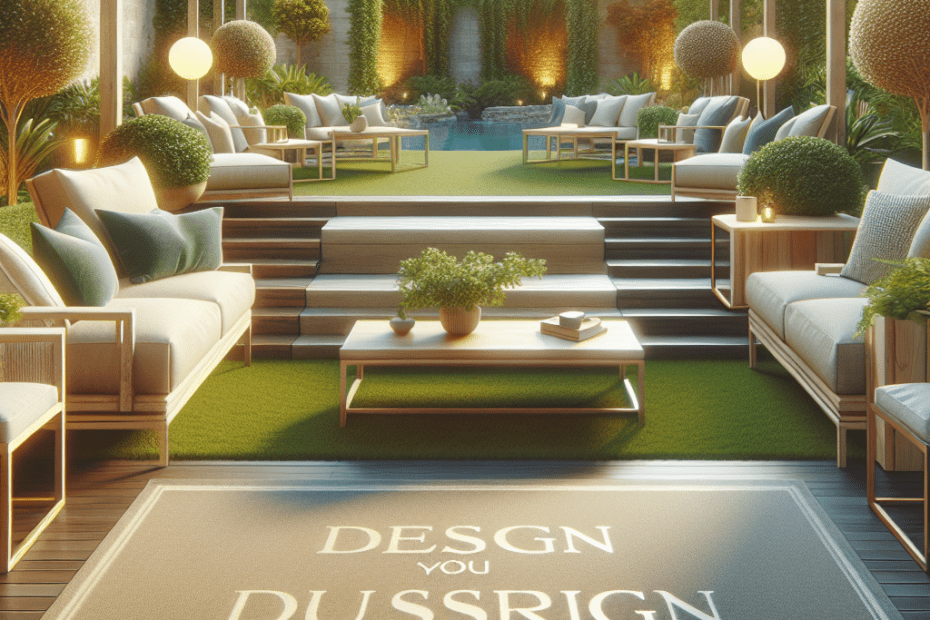“`html
Designing an Outdoor Living Space with Cozy Seating
In recent years, they’ve been spending more time appreciating the great outdoors from the comfort of their homes. Designing an outdoor living space with cozy seating has become a popular home improvement trend. By integrating comfortable and stylish outdoor seating, they are not only enhancing the aesthetic of their homes but also increasing its value.
Planning Your Outdoor Seating Design
Creating the perfect outdoor seating design involves several considerations. Firstly, they’ll want to identify the purpose of the space. Whether it’s for entertaining guests, enjoying family time, or even as a peaceful retreat for relaxation, knowing the primary function will help guide the design choices.
- Evaluate the Space: They should assess the available outdoor area in terms of size, shape, and exposure to the elements. This will help determine the type and amount of furniture they can incorporate.
- Set a Budget: While designing, keeping a budget in mind ensures that they stay within financial limits and make practical choices without compromising on quality.
- Chose Durable Materials: The use of weather-resistant materials like teak, aluminum, or all-weather wicker ensures longevity in outdoor furniture.
Selecting the Right Furniture
According to a report from HomeGoods, 42% of homeowners consider their outdoor space a ‘sanctuary’, making furniture selection critical. They’ll want to focus on comfort, functionality, and style.
| Furniture Type | Benefits | Considerations |
|---|---|---|
| Sofas & Sectionals | Versatile seating, provides comfort and ample space. | Ensure they are water-resistant and easy to clean. |
| Chairs & Lounges | Great for intimate settings and easy to move. | Choose chairs with ergonomic designs for added comfort. |
| Hammocks | Perfect for relaxation and adds a casual vibe. | Require sturdy mounting points or stands. |
Accessorizing for Comfort
Accessories can transform a plain outdoor seating area into a cozy retreat. They might consider adding plush cushions and throws in weather-resistant fabrics to provide warmth on chilly evenings. Adding an outdoor rug can define the space and introduce color and texture. Furthermore, options like outdoor heaters or a fire pit can extend the usability of the space into cooler seasons.
Lighting and Ambiance
Lighting plays an essential role in outdoor seating design. According to the American Lighting Association, homeowners who incorporate strategic lighting into their outdoor spaces see a 20% increase in time spent outside. They can use string lights, lanterns, or solar-powered LEDs to create soft and inviting illumination. For those who enjoy entertaining, dimmable lights offer flexibility to adjust the ambiance to their liking.
Incorporating Nature
The addition of plants and natural elements can enhance the tranquility of an outdoor seating area. They might incorporate vertical gardens, potted plants, or even a small water feature. These elements not only improve air quality but also contribute to the aesthetics and mood of the space.
Creating Privacy
For a space to truly serve as a sanctuary, a degree of privacy is often desired. They can consider options like bamboo screens, plant borders, or pergolas draped with outdoor fabric. These features not only offer seclusion but can also shield them from wind and sunlight.
Maintaining the Space
Maintaining an outdoor seating area involves regular cleaning and care. They should follow manufacturers’ guidelines to ensure the longevity of their investment. Regular dusting, washing cushion covers, and covering furniture when not in use can keep everything in top condition.
Key Takeaways
- Planning and assessing the purpose is key to an effective outdoor seating design.
- Choosing durable and weather-resistant furniture is essential.
- Accessorizing adds comfort and style to the space.
- Lighting enhances ambiance and increases usability.
- Incorporate greenery and privacy elements for a tranquil environment.
- Regular maintenance extends the life of outdoor furniture.
FAQ
- What materials are best for outdoor furniture?
Materials like teak, aluminum, and all-weather wicker are considered ideal due to their durability and resistance to outdoor elements.
- How can they make an outdoor seating area private?
They can use bamboo screens, plant borders, or pergolas with draped fabric to create privacy.
- What type of lighting is best for outdoor areas?
String lights, solar LEDs, and lanterns are excellent for creating soft, inviting lighting in outdoor spaces.
- How often should outdoor furniture be cleaned?
Regular maintenance includes dusting and cleaning based on manufacturers’ guidelines, generally at least once a month or as needed.
- What are some affordable ways to enhance an outdoor living space?
Add inexpensive touches like cushions, rugs, and potted plants to enhance the comfort and aesthetics affordably.
“`
By following these guidelines, they can create an inviting and relaxing outdoor living space that is both functional and beautiful. Designing such a space can greatly enhance their quality of life and offer an ideal setting for leisure and entertainment.
